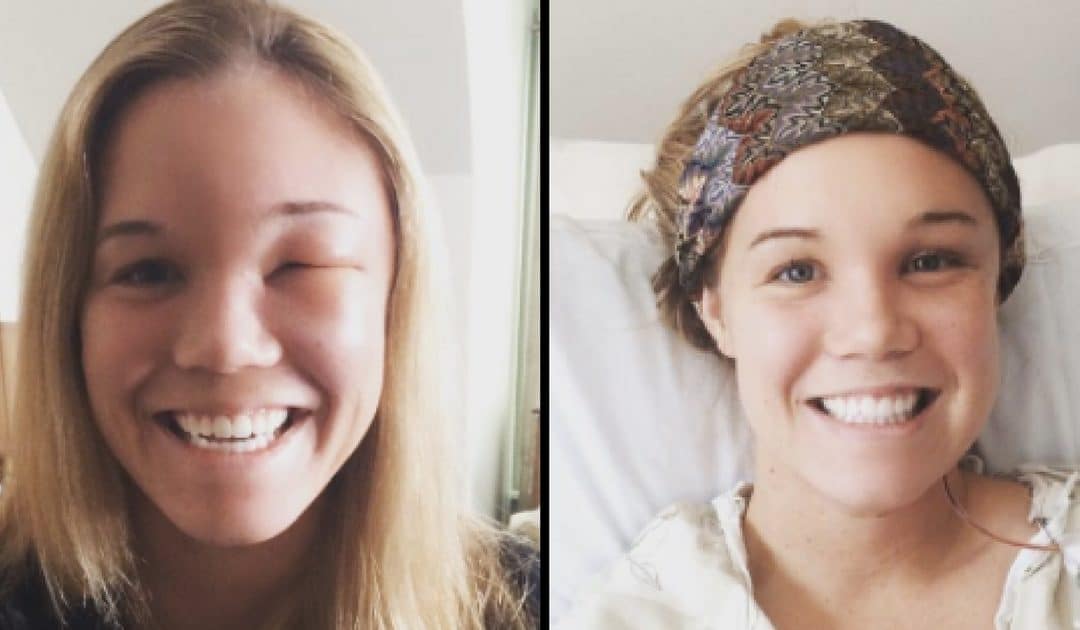Sarah Porter was sitting in her college math class six years ago when something strange happened.
“I went a bit foggy,” the now-26-year-old recalled. “I didn’t think anything of it, I thought I was a bit tired.”
A classmate noticed that Sarah’s face was twitching and asked if she was ok. Then Sarah passed out.
What she didn’t know at the time was that she had just had a stroke.
Sarah dragged herself back to her room, but her right arm was tingly, her right leg wouldn’t work, and her face was in spasm.
When she went to the hospital, though, the nurse thought she was faking. She said no one Sarah’s age and in good health would have a stroke, and said she thought Sarah was just trying to get out of final exams.
Thankfully, her brother wouldn’t accept the nurse’s condescending answer and demanded they look into things further.
“The crazy thing is, I probably would have listened to her if my brother wasn’t there kicking up a fuss,” Sarah said. “I had no idea what was happening to me, and to be honest I didn’t think I could have a stroke that young either.”
The next day Sarah couldn’t walk and couldn’t remember her entire sophomore year of college or parts of her childhood. That’s when doctors started to take her seriously.
The next few years of her life were not easy ones. Sarah suffered two more strokes and had two brain surgeries as doctors tried to figure out what was going on and correct it.
Thankfully she recovered and is doing well. She is now using her scary experience to educate others about the warning signs of strokes in the hope that she can help save some lives.
Stroke is the third leading cause of death in women. Because women tend to live longer than men and often have strokes while they are alone, the strokes are more likely to cause long-term negative effects.
You should know the signs of a stroke so you can get treated as soon as possible.
Common symptoms include:
- Sudden numbness or weakness of the face, arm, or leg, especially on one side of the body
- Sudden confusion and trouble speaking or understanding
- Sudden trouble seeing in one or both eyes
- Sudden trouble walking, dizziness, and loss of balance or coordination
- Sudden severe headache with no known cause
Women have even more specific symptoms of stroke:
- Loss of consciousness or fainting
- General weakness
- Difficulty or shortness of breath
- Confusion, unresponsiveness, or disorientation
- Sudden behavioral change
- Agitation
- Hallucination
- Nausea or vomiting
- Pain
- Seizures
- Hiccups
The most effective stroke treatments are only available if the stroke is recognized within three hours, so it is important to know the symptoms and take them seriously.
If you believe someone you are with may be suffering from a stroke, FACE is a good acronym to remember:
F – Face drooping. Ask the person to smile and see if it is uneven or lopsided.
A – Arm weakness. Ask the person to raise both arms and see if one arm drifts downward.
S – Speech difficulty. Ask them to speak a simple sentence like, “The sky is blue.” Is their speech slurred or difficult to understand? Are they unable to speak at all?
T – Time to call 911. If the person shows the above symptoms, call 911 immediately, even if the symptoms go away.
Help us spread this information to others so more people’s lives can be saved! Share this!

